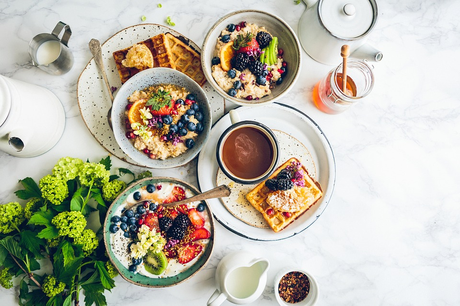
From obesity to heart complications and many other health issues, unhealthy foods are just what they are – unhealthy. Unfortunately, they appear to be the ones that usually taste better, which isn’t fair. The fries, pastries, pizza, burgers, coke, salty chips, name them, and your throat will start feeling moist already. Little wonder many people associate healthy foods with bland-tasting recipes. But eating healthy doesn’t mean giving up your favorite meals. It only means creating healthier alternatives to your favorite recipes. You can use the following tips to make your meals at home healthier.
- Make a plan
Cooking healthier meals and sticking to that habit doesn’t happen by chance. It requires intent backed by a plan. Otherwise, you’ll easily find yourself drawing blanks as to what to make for your next meal, making it easier to reach for or purchase unhealthier food options.
So, take the time to write down a detailed weekly or monthly menu, and let that menu guide your grocery shopping list.
- Shop for whole foods
Consider whole foods the opposite of processed foods, as the former comes as single-item ingredient lists. Preparing your meals with whole foods as your main ingredients gives you better control over what components go into your meals. This will prove especially helpful if you’re monitoring your calorie count or watching your weight. That’s because cooking with whole foods makes it easier to record what you’re eating.
- Don’t lose essential nutrients in the cooking process
It is possible to lose water-soluble vitamins when cooking. To avoid this, scrub your vegetables instead of peeling them to benefit from the nutrients in the skin. Also, steam or microwave the vegetables instead of boiling them. But if you prefer to boil your vegetables, use only a small amount of water, and do your best not to over boil them.
- Keep fats to a minimum
If you love to have meat in your recipes, be sure to opt for lean meat. Also, it’s best to choose reduced-fat dairy products while limiting or staying away from processed foods to minimize hidden fats. You might also want to start adding more fish, seeds, nuts, soy, and olives to your recipes, as they offer essential long-chain fatty acids with the extra benefits of added nutrients.
- Don’t say bye to the foods you love
As indicated earlier, eating healthily does not mean eating foods you hate; it also means giving the recipes you love a more healthy twist. Even the french fries that get a bad rap for their extra fat and calories can get a touch of healthy transformation by opting to bake them, going oil-free, or shallow frying them NOT in vegetable oil.
Regardless of the meals you love, you can always find ways to make them healthier without messing up what makes them so delicious for you. You can also make minor substitutions to recipes you already know without losing the good taste and nutritional benefits. For instance, if you love making bean chili, without the beans, you can opt for a chili recipe no beans variant instead.
Thank you for reading!


